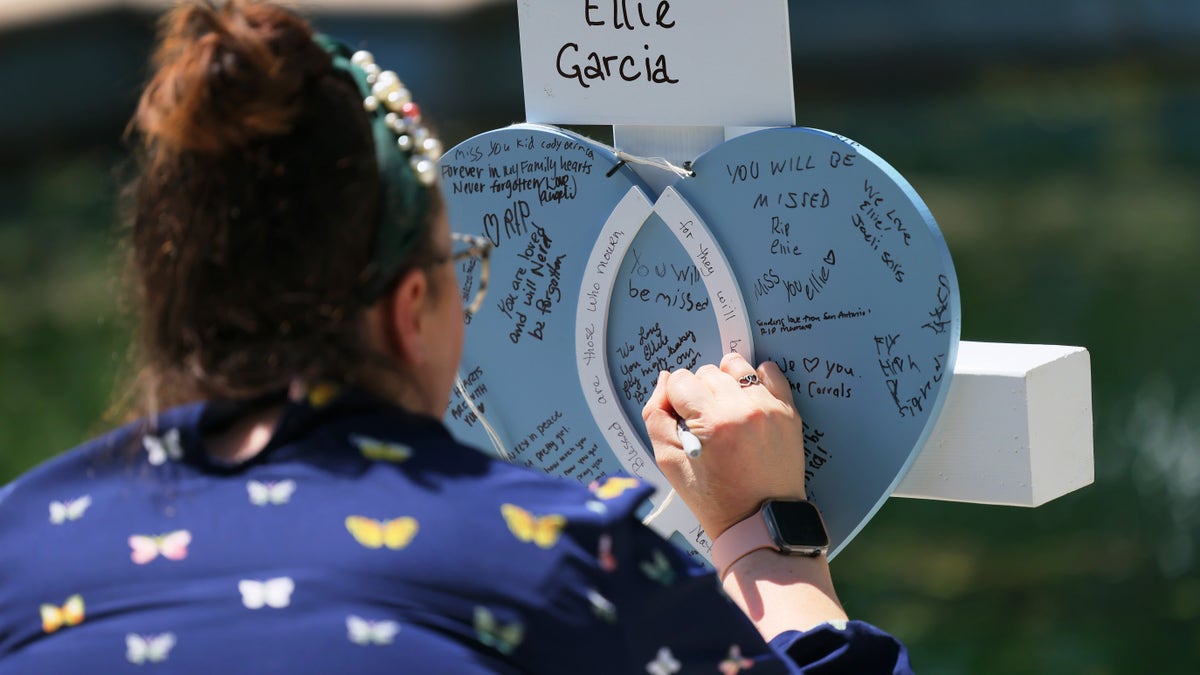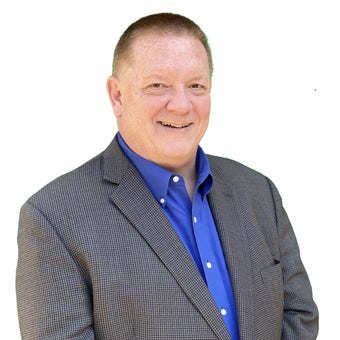Security expert says these are the best practices to keep schools safe
President of National School Safety and Security Services Kenneth Trump discusses the best ways to keep schools safe from potential shootings on 'Fox Report.'
The attack by a gunman upon students and teachers at Robb Elementary School in Uvalde, Texas, sent shock waves throughout school communities across the nation.
Parents are asking whether their school officials have not only target-hardened their schools, but also if staff inside those schools are following the simplest of security protocols such as not propping open perimeter doors. Many parents are now uncertain as to whether the first police officers on the scene of an active school shooting will enter their schools to immediately neutralize the shooter.
The attack at Columbine High School in Colorado more than two decades ago resulted in schools upgrading physical security such as access control, surveillance cameras, and communications equipment. They trained administrators, teachers, and support staff on prevention, intervention, response, and recovery best practices. School and safety officials partnered in implementing new lockdown, evacuation, shelter-in-place, and related emergency drills.
TEXAS SCHOOL SHOOTING: BORDER PATROL AGENT REVEALS 'CHAOS' OF RESPONDING TO ROBB ELEMENTARY
Police tactical responses also dramatically changed. The model leading up to Columbine called for the first officers on scene of an active shooter to set up a perimeter and wait for SWAT. This approach shifted to the first few officers, and over time to the first single officer, to immediately enter the school to neutralize the shooter.

A police officer comforts family members at a memorial outside Robb Elementary School in Uvalde, Texas, on Thursday, May 26. (Wally Skalij/Los Angeles Times via Getty Images)
But the 2018 attack at Marjory Stoneman Douglas High School in Parkland, Florida, put a focus on the Sheriff’s deputy, a School Resource Officer (SRO), who stood outside while the attack occurred inside the school. That officer was scorned by parents, the community, and others. Fast forward to four years later and the questions and scorn are even worse following reports of police waiting more than an hour to enter the classroom at Robb Elementary School.
TEXAS SCHOOL SHOOTING, ONE WEEK LATER: FAITH LEADERS SHARE ANGUISH, HOPE FOR THE FUTURE
Many of our nation’s law enforcement agencies have trained officers to the post-Columbine era standard and they will not hesitate to enter schools to protect children. Many schools make their buildings available after hours or on weekends for police to conduct tactical training in schools. Police are given blueprints and floor plans, keycards or keys, and remote access to school surveillance cameras to facilitate tactical access.
Elected officials have thrown millions of dollars at target hardening schools by focusing on security hardware and equipment. After every school shooting, we hear calls for metal detectors and even more security equipment. Security product and hardware vendors have overwhelmed school leaders with endless sales pitches and claims that their items will make schools safer.
There is a role for security hardware and products. However, these items are only as strong as the weakest human link behind them. We saw that in Uvalde when the gunman entered the school through a door left open by a teacher --- a constant problem seen in schools for decades.
TEXAS SCHOOL SHOOTING: STATE SENATOR SAYS EVERY AGENCY SHOULD BE 'TAKING HEAT' OVER POLICE RESPONSE
Oftentimes a skewed focus on security hardware is little more than "security theater": Creating a feeling of improved security by providing visible, tangible things to point fingers at to make parents feel their children’s schools are safer. Meanwhile, schools increasingly fail to put more fundamental, proven best practices in place to address the human factors behind those fortified doors.

A mourner writes a message on memorial for a victim of Tuesday's mass shooting at an elementary school, in City of Uvalde Town Square on May 26, 2022 in Uvalde, Texas. (Michael M. Santiago/Getty Images)
As an expert witness for civil litigation on school safety cases including mass shootings, one thing has become very clear. While the facts and merits of each case vary, the common thread is that most involve allegations of failures of people, policies, procedures, training, supervision, and related human factors. They do not typically involve allegations of failures of security hardware and products.
CLICK HERE TO GET THE OPINION NEWSLETTER
The first and best line of defense is a well-trained, highly alert school staff and student body. The number one way we find out about weapons in schools, shooting plots, and individuals intending self-harm is when students come forward and tell an adult they trust about these threats.
We keep students safe when school leaders analyze incident data, identify hot spots in their building, and strengthen supervision in common areas to reduce the opportunities and risks for violence.
We should focus on the school safety fundamentals of by training school staff, including custodians, front office support staff, and bus drivers, on school security and emergency preparedness best practices.
We are also adding new training to help frontline school staff to be better prepared for the "unknown unknown" threats. Training on situation awareness, recognizing abnormalities based upon pattern recognition, and new cognitive decision-making models for assessing and acting under duress can take school safety to the next level.
These more effective means of making schools safer are often less visible or invisible. Schools must balance hardware with heart ware. We need better security training to create reasonably secure environments for educators to deliver the many academic, social, emotional, mental health, and other student support services.
CLICK HERE TO GET THE FOX NEWS APP
We know what the best practices are, but the devil is in the details of implementation. Meaningful school safety requires that leaders allocate reasonable time for training, planning, preparation, and practice. But time is often scarcer than money, and time and distance from mass school shootings breed complacency and fuel denial.
The question is not whether the latest attack upon children and educators at Uvalde is a wakeup call. The real question is will we hit the snooze button and go back to sleep?




